Ever since I remarried, I’ve been faced with an interesting situation that has caused me to rethink survival.
You see, my wife works for the city, which means that she serves in the Emergency Operations Center (EOC) whenever there is a pending disaster. That means we can’t bug out until the entire city has been evacuated.
This has thrown out some of my disaster planning, causing me to have to rethink it. When Hurricane Hanna came to call a couple of weeks ago, I was faced with two juxtaposed problems. One was the issue of keeping my wife and I safe, the other was the need to take care of three houses spread around town.
Granted, Hanna wasn’t much of a hurricane, as hurricanes go. I’ve lived through worse. We never really know how bad a hurricane is going to be until it makes landfall. Many hurricanes pick up speed as they draw closer to shore, increasing the amount of damage they can cause. So we always have to expect the worst, until we see otherwise. But in this case, had I a choice, I probably would have chosen to bug in, rather than bug out, even though I live right across the street from the bay.
Given all that, I still thought about the possible need for bugging out, I just had to think of it differently.
Avoid the Crowd
We’ve all seen the pictures of highways turned into parking lots, with captions about how a bug out will look. There’s a lot of historical data to back that up. When hurricane Irma was approaching Florida, Governor Scott ordered a general evacuation of the state. The highways were so bad, that people were having to drive to the northern end of Alabama and Georgia to find someplace to stop.
Something similar happened in 2005 when the city of Houston was evacuated for Hurricane Rita. The traffic jam from that evacuation was over 100 miles long and lasted more than 24 hours. Because of the heat, people died of heatstroke (otherwise known as hyperthermia) while sitting in traffic. A bus caught fire, causing the death of 24 evacuees from a nursing home.
In both of these cases, there wasn’t enough gasoline to go around. If you look at the pictures from the Hurricane Rita evacuation, you’ll see that there were hundreds of cars pulled over on the sides of the road. Some of those were cars that overheated or broke down, but most were due to running out of fuel. Gas stations sold out quickly, leaving people stranded without the gas to get where they were trying to go.
Governor Scott tried to avoid the same problem in Florida by putting out a general call for gas trucks to bring fuel into the state for the evacuation. We can see that his actions made a huge difference, as the pictures of the evacuation don’t show all the cars stalled on the side of the road like there were for Rita.
Make Sure the Bug Out is Necessary
But the reality is, even though there was a general evacuation order in place for Florida, most of those people didn’t need to evacuate. It appears that Governor Scott may have made a bad decision, perhaps based upon being given some bad information.
Before hollering “bug out” we need to understand why we’re bugging out. In the case of a hurricane, it’s not the wind that forces an evacuation, but storm surge and flooding. Storm surge is predicted in advance by the National Hurricane Center (NHC) and posted on their website. If the storm surge is high enough to cause flooding of coastal towns, they should be evacuated.
There are many factors that affect storm surge, not just how high the hurricane’s winds are. The highest surge will always right outside the eye, with it tapering down the farther out you go. So even if you hear of a high storm surge, you’ve got to take into account how close the eye will pass to you.
To put that in a bit of perspective, Hurricane Katrina provided the all-time US storm surge record at Pass Christian, Mississippi. That was 27.8 feet, measured in a place where waves couldn’t reach. Although I live right across the street from the bay here, I’m 33 feet above sea level, so the chances that I would have to evacuate due to storm surge are insignificant.
Nevertheless, some seven million people evacuated from Florida in preparation for Hurricane Irma. Why did they evacuate? Because the news was making a big deal about the high winds, while the hurricane was still in the Caribbean. Evacuees interviewed on the road almost all stated that their reason for bugging out was because of those high winds. Many didn’t even live where storm surge could reach their homes.
So how serious a problem is wind? Winds can cause a problem for three parts of a home: windows, doors, and roofs.
- Roofs – There are two ways that high winds can damage roofs, either tearing shingles off or lifting the roof right off the structure. Standard 3-tab shingles aren’t good enough to withstand hurricane-force winds, as they are only designed for wind gusts up to 60 MPH. But architectural shingles can withstand winds up to 110 miles per hour. So they shouldn’t be damaged by Category 1 or 2 hurricanes, even though they can be damaged by stronger ones.
- Roof Structure – The problem of hurricanes lifting roofs right off of homes has been eliminated in recent times by the addition of hurricane clips. These attach the roof structure to the wall structure more securely, solving this problem. However, older homes that have not been retrofitted can still lose their roof.
- Windows – Being made of glass, windows are the most susceptible to damage by high winds. Even so, a single-pane window can withstand winds up to 70 MPH. Pressure-rated windows, designed for hurricanes, can withstand speeds up to a Category 4 hurricane. But the bigger problem for windows is objects being thrown around by the wind. To protect from those, windows need to be covered with ¾” plywood.
- Doors – Doors are actually the least likely of these three areas to be affected, but they can be a problem. The problem with doors is the pressure differential that exists inside the home, compared to the pressure of the driving wind. This problem is easily solved by opening a window a small amount on the downwind side of the home. Adding bracing or a bar across the door will give added security.
With these precautions in place, there really is no reason to bug out, if your home is above the storm surge.
Non-storm surge flooding isn’t usually as much of an issue as that caused by storm surge. What made Hurricane Harvey such a problem for Houston was that there was very little drainage in the city. Water doesn’t soak into asphalt and concrete, so it has to have someplace to go. But in that case, it didn’t. Added to that, the storm stalled, dumping more rain on Houston than what was expected.
As we see in these two cases, we can’t count on the government making our bug out decisions for us. Many of the people of Florida didn’t need to evacuate, even though they did. On the other hand, the people of Southeast Houston really did need to evacuate to avoid the flooding, but no evacuation order was given.
Get Out Early or Ride it Out
Looking at these past evacuations and others, there’s one thing that’s imminently clear. That is, you don’t want to be caught in a general evacuation. If there’s one thing worse than riding out a disaster in your home, it’s riding it out in your car, stuck in traffic. So if you don’t know you can clear the area before the disaster strikes, your best bet is to stay at home and ride to ride it out.
Florida actually reached the point, during their 2017 evacuation, where the government told the people that if they hadn’t evacuated yet, they shouldn’t try. The storm had gotten close enough to the state, that evacuation before the storm hit was impossible. Therefore, it was safer for people to stay at home, riding out the hurricane, then it was for them to try and get out of the storm’s path.
The trick here is figuring out what’s going on before everyone else does. That’s not easy to do. I keep a close eye on the NHC website, but even they aren’t absolutely sure where the hurricanes are going. Nor do they really know how much wind speed will be gained, before making landfall.
To a large part, we’ve got to trust our instincts on this. If your gut is telling you to get out of Dodge, then you’d better load up the car and get out. You might be wrong; but if you are, all it will cost you is a few day’s work. You can recover from that.
Bugging out early gives you the greatest advantage, especially in a time of social unrest. If you wait too long during such times, you might find yourself trapped in the city. While you could try and fight your way out, chances are there will be more of them, than there are of you. With them having the advantage of defensive positions, it will be a very hard battle to win.
Of course, staying at home through any disaster requires making sure your home is ready for the disaster. If you’ve got a Category 4 hurricane bearing down on you and you haven’t done anything to protect your windows, you’re going to have a hard time of it. You’ll have a bear of time covering the windows up after the wind breaks them if you’ve got anything you can cover them up with.
Bugging Out Late
The possibility of bugging out late may not even exist; if it does, it may not be necessary. Nevertheless, it’s still something we need to consider. That’s what I was faced with when I was preparing for Hurricane Hanna.
First of all, bugging out late might mean trying to bug out in the middle of the disaster. In my situation, I can’t bug out until the city is evacuated. That probably means that I won’t even have the chance of bugging out until after the hurricane has made landfall. That usually means that the eye of the hurricane has made landfall, which means that there has already been a lot of rain.
Theoretically, the roads should be cleared by then, but I doubt it will happen that way. With how long the evacuations for Irma and Rita took, there will be a long line of traffic still on the roads. Nevertheless, there are ways of dealing with this.
To start with, most people are going to leave town by the major highways, heading for the next big city down the road. These are unprepared people who are merely trying to make as much mileage as they can, as fast as they can. They haven’t through it through, especially the part about figuring out what they actually needed to do, in order to ensure that they are safe.
When the Oroville dam in California looked as if it was going to fail, city officials called for a general evacuation. People loaded their cars with everything imaginable (most of it useless for survival) and turned the highway leaving town (state highway 70) into a parking lot. But if you look on a topographical map of the area, you can find a couple of roads heading east out of town, into the mountains. Just going a few miles down any of those roads would have gotten the residents of Oroville out of the flood plain downstream of the dam.
In my case, there are several state highways and county roads that leave the city where I live. So while most people will get on the interstate highway, I’ll be tracking down one of those roads. While I’m sure there will still be plenty of traffic to have to deal with, I strongly suspect that it will be moving better than on the interstate, mostly because those roads really don’t lead anywhere of consequence.
As a prepper who has spent plenty of time outdoors, I don’t need to find a fancy hotel in a big city for my bug out. As long as I can clear the area, I’ll be okay. I may not be comfortable, but I’ll be okay and that’s what it’s all about.
Either Way, Get Ready Early
Regardless of what you end up doing, get ready to bug out early. I filled up my gas tanks and cans three days before the hurricane hit and I kept them full. That way, if I did end up bugging out, not only would I have a full tank of gas in my SUV, but three five-gallon jerry cans full to boot.
I also loaded up the back of the SUV with all the gear I would need to ride out the storm. This included rain gear, axes, and saws to clear downed tree branches, camping gear, food, water, and clothes. While I didn’t end up using any of it except a machete, having it in the vehicle ensured that I was ready to bug out, to take care of a problem at my brother-in-law’s house or to sleep in the vehicle if I got stuck somewhere while checking on the houses.


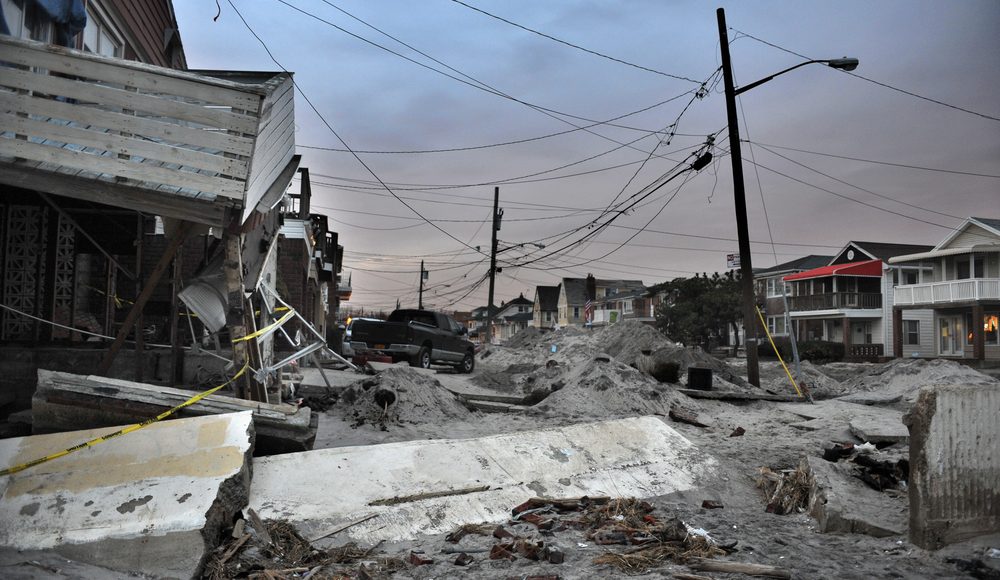

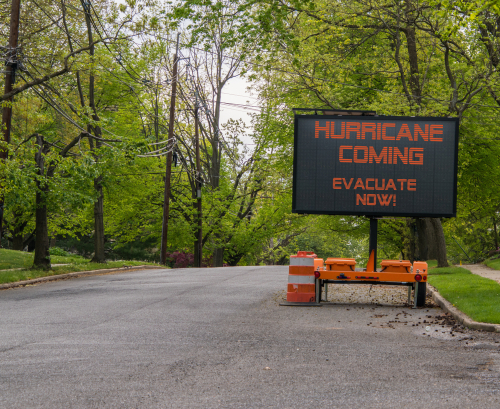
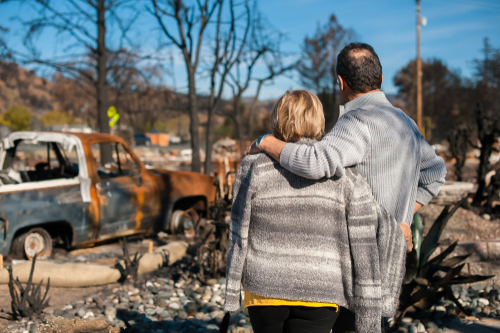


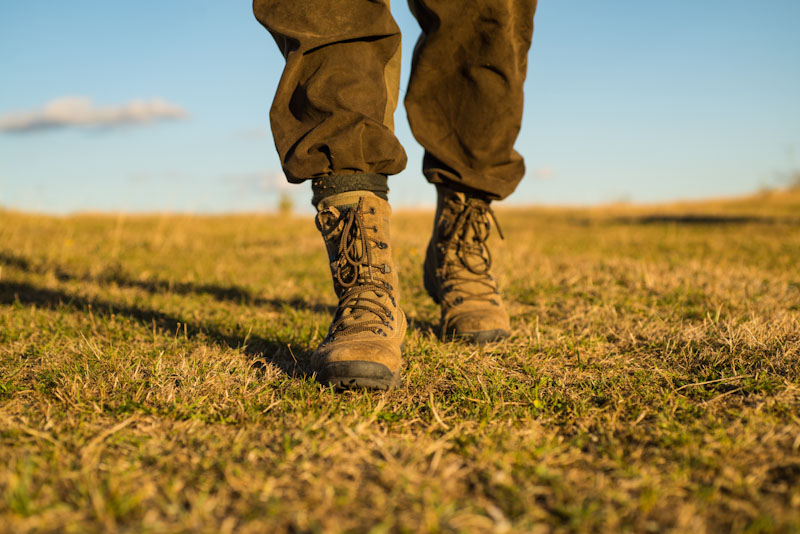

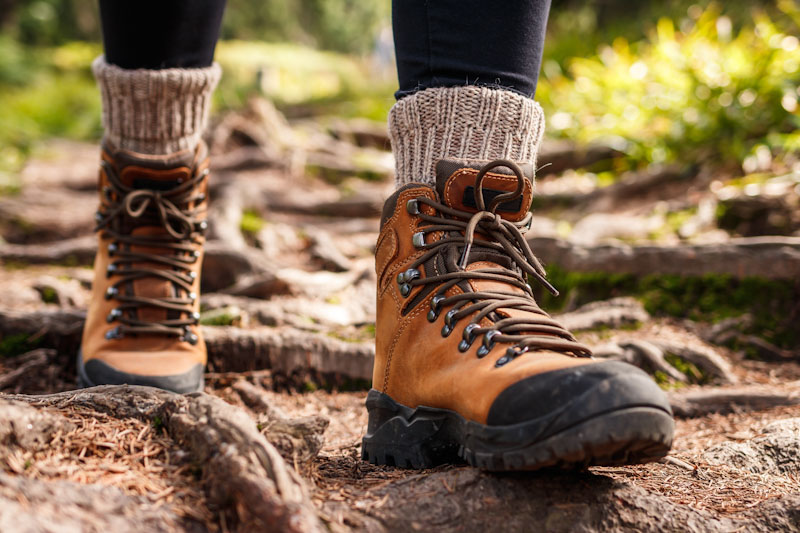

Zippy | August 18, 2020
|
Good article Bill. I started getting into the same habit of filling the truck and three extra five gallon cans days before a hurricane hits south Georgia. I’ll never forget the poor saps coming out of Florida going bumper to bumper on the interstate. We’ve been lucky so far living way out in the sticks, having to only worry about downed trees and power failure/well failure so now I keep a dozen or so gallons of purified water in the closet along with about six months or more of freeze dried survival food and cans of chicken, tuna and salmon. Lately I found myself keeping all the jugs full of gas along with the truck just in case an EMP hits given the increasing threat of solar flares or hostile foreign nations. Another thing I decided on was keeping a bug out bag on wheels in the wife’s car since she travels 20 minutes one way to the nearest city w/ Food, water, shelter, fire starters, lights, change of clothes, and just gave her a Ruger LCRx because she has arthritis and can’t rack a slide and it only weighs 13 oz. I also keep four filled propane tanks to use with the fish cooker to do whatever with, and seems funny that I took a break from writing this to walk the dog and noticed a bad thunderstorm moving in from the northwest so I set out and filled four, 5 gallon buckets with water to use for flushing toilets when the power goes out like it always does. We took advantage of the low ammo prices starting years ago so we don’t have to worry about that, and I just purchased an 1800 watt solar generator (768 watt hours) and two panels just for shits and giggles. It’ll keep the fridge/freezer and tv/satelite dish going for days (with proper power management) and hopefully the sun will pop out once in a while to charge it, but if all else fails, we still have the propane tanks to cook with. So, since this is an article on bugging out, lol, I ain’t gonna! Well, unless we see the big red star on planes flying by and parashoots opening which will mean Moody Air Force Base has fallen. Just for those folks reading this who are just now thinking of preparing, just remember that it’s not too late, never too late to start. You’ll be happy and relieved when you do. Just go slow, don’t break the bank and be smart. If you blog about it, don’t tell anyone your real name or where you live and don’t tell family or friends because it’ll be a dog eat dog world if it really hits the fan (including martial law). Maintain a low profile. Hmmmm, maybe I should delete this but what the heck, You’ll never find me lol. Vote Trump and God Bless America!.
Cutter | August 18, 2020
|
I plan to bug in also. I have not found a bug out location which is sustainable and defensible at this time (although I am trying to find such a place). I do have a moderate amount of supplies therefore I feel that I can bug in for quite a while until an opportunity appears for a good relocation. I have portable solar panels and generators to energize my well and freezers. During a disaster fuel may become scarce. I store gasoline and diesel in a lockable yard storage box to keep the fire risk out of the house. I store ethanol free winter blend gasoline which stores longer than other gasolines and add preservative. I have used this gasoline which was 5 years old in my pick up truck and generator without a problem.
SkiptheBS | August 19, 2020
|
Go online to find US Geological Survey topographic maps of your area and adjacent areas. Most are not up to date but all will show back roads. Trace out alternate routes to get out of your area when SHTF.
My experience as a hospitality worker is that many of the Hurricane Inez refugees lived in mobile homes. A refugee who decided to return to this area for good stated that, a year after the event, some families in the Ft. Myers area were still living in cars and many sported the famous Harbor Freight roofs, i.e. blue tarps. FEMA help was absent or small.
Bluetiful Bee | November 5, 2020
|
definitely bug out bag is most important in a time of disaster.
radarphos | July 14, 2021
|
Older homes (mine a two-story built by 1939) had weak Gable End construction in the attic area. A Gable is an ” A ” shaped roof. The Gable’s end siding sheath board(s) is triangular between the roof and the top floor ceiling. Katrina taught us that people should put a bucket of old tools (hatchets, axes, heavy-head hammers, pry bars, etc.) in the attic, should any flood waters rise that high, so that you could hammer and chop a hole in your gable end or roof and pry off boards to escape.. The Gable end board is easiest to break a hole in to escape an attic when one is trapped by rising flood waters. But this same Gable End Board (in most older homes) was constructed very weakly. A falling tree can smash it in, creating the perfect hole for winds to lift off your roof (especially if the storm is moving towards a Gable End Board). These can be easily “beefed up” with 2 x 4’s that can be fixed horizontally or diagonally (or both) between vertical boards and the inside Gable framework.. If your home is in a coastal area where flooding can reach high heights, Beef up your boards in such a way that you can fit a pry bar behind them, to pull them off should you or yours head for an attic to escape a flood. The idea is that you are beefing up the exterior triangle of the Gable Roof so that it doesn’t crash inward; but at the same time, since the easiest way to escape an attic is through a Gable Roof’s end Boards, you want to cross-hatch those boards in such a way as you can pry them off easily if you need to escape.
In a tornado, you do want the Gable End Board Sheathing to remain intact. So climb into the attic and see for yourself how many boards cover that piece of wood; And check the condition of any “vent” windows, air vents,, etc. Also look to see if you have hurricane or tornado supports where “wood meets wood” (metal pieces with lots of nail holes)> If a tornado takes off a roof, everything is going to be sucked up and out of your house (maybe you too); and the odds are that half your interior walls will collapse downward, domino fashion.
Also, once and for all, DO NOT OPEN ANY WINDOWS IN A TORNADO or hurricane (that was old advice in the early 20th century for trying to reduce air-pressure differences between inside house and outside. It is a proven bad idea. Think of the wind as a WET hand’s palm. when it hits something, it slips off one way or the other and goes around an obstacle. It is the wind behind – the wind that hits your house- that begins moving around your house and taking the wind that hits your house away from your house and this happens in tiny circular twirls of moving air (that hits the obstacle side of your house). So the wind that hits your window begins spinning and dragged by the wind behind it around your house, provided your windows are closed. If the windows are open, “a wind finger (more or less) is going to come into your house and will both PUSH AND PULL your window out of its frame (and that happens without the potential worse damage, which is flying glass). The pushing and pulling of your window out of its frame is caused by the wind behind the wind that now enters your window. Think of tornado and hurricane winds as if the “house strength” was like the defensive front line of a professional football team. The wind itself is equivalent to the Offensive front line of a professional football team, along with two other lines behind them (all of them pushing the front line against its opposition). When THE TWO meet, the two offensive back “front lines” start rolling off the very front offensive line, and potentially the very front offensive line rolls with them (at least following the path of least resistance). So on the one hand, it is as “scary as hell”. But on the other hand, everything that hits an obstacle is deflected; and when it moves fast, it is deflected in a circular fashion (similar to a dust devil or mini tornado) and the meaning of this is that it will “roll off and away” PROVIDED THE OBSTACLE REMAINS INTACT AND DOES NOT COLLAPSE INWARD. If the Gable ends of a roof collapse inward, the whole house will be gone and spread all over many neighborhoods.
By the way, in hurricane-ally, hollow-cement homes withstand the storms (presumably the same holds true in tornado ally (and for the same reason mentioned above–the wind that hits the house spins off the house. In earthquake ally, wood homes (able to bend, twist some and remain intact) are most survivable. Here I refer to the basic wall structure and not the “false facade siding” that may be attached to an exterior house to enhance is appearance.(